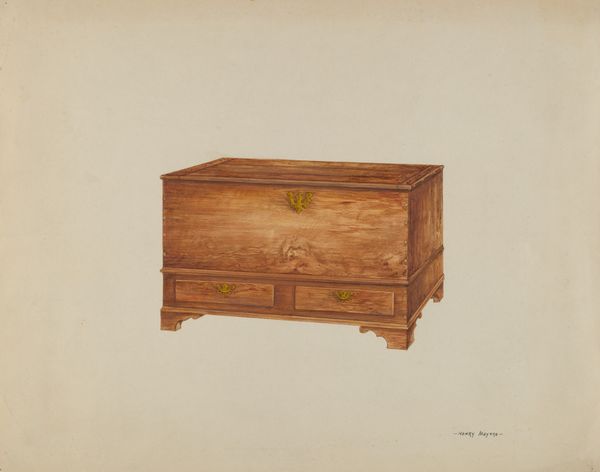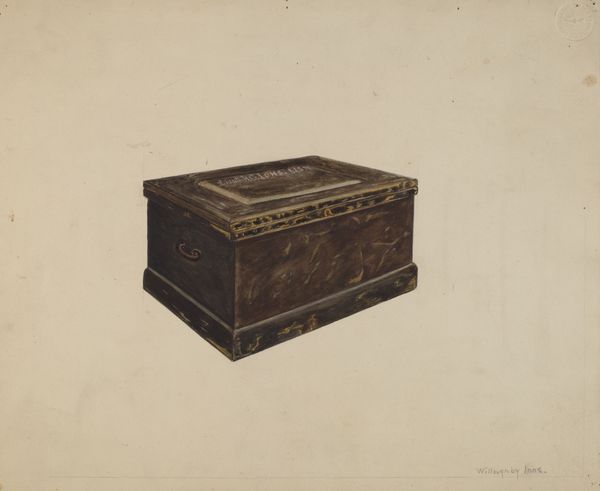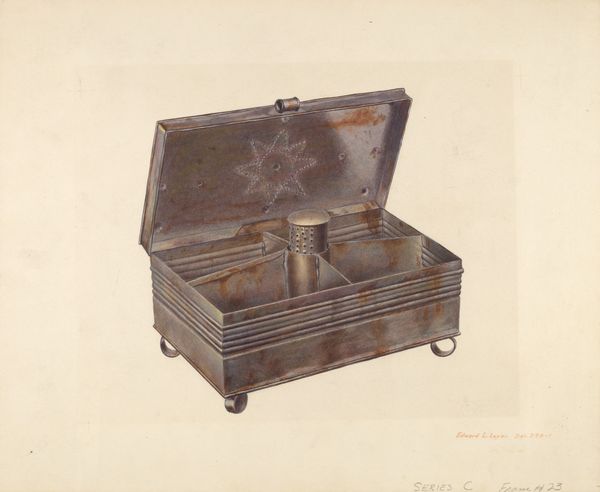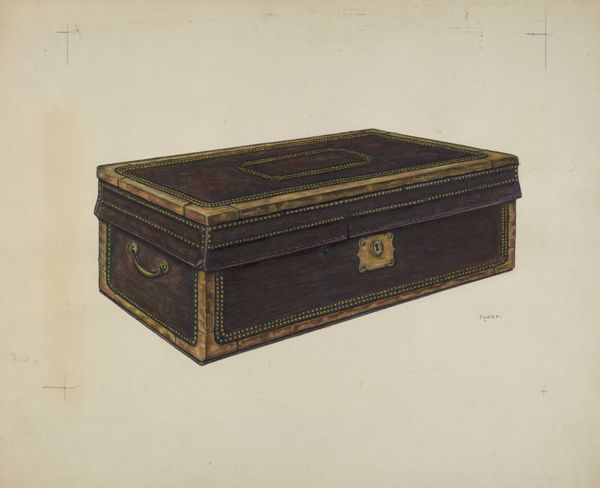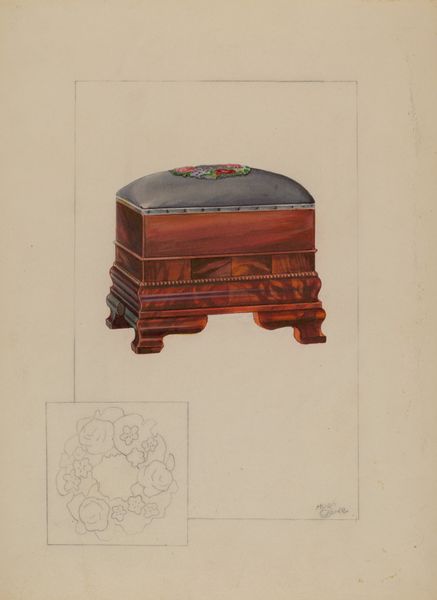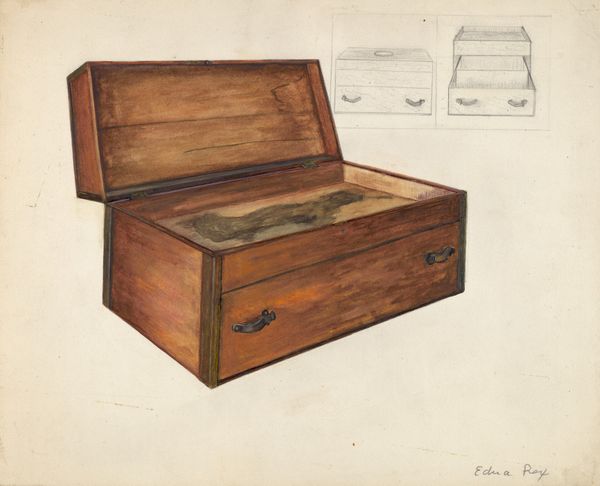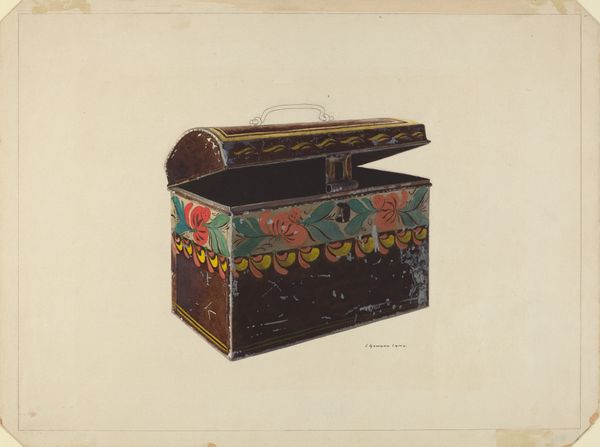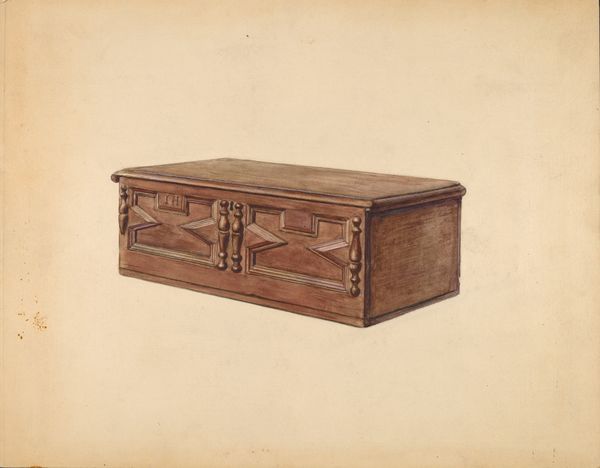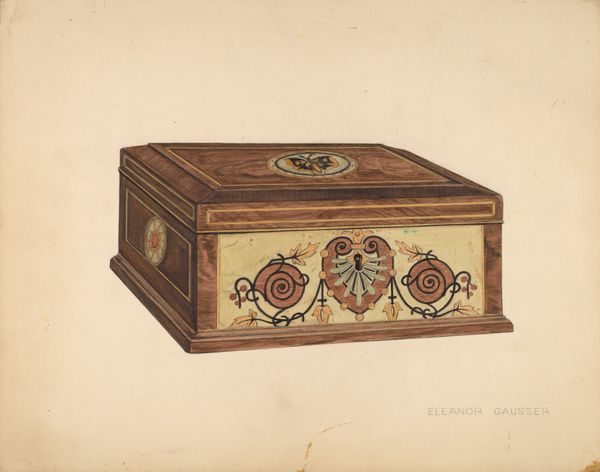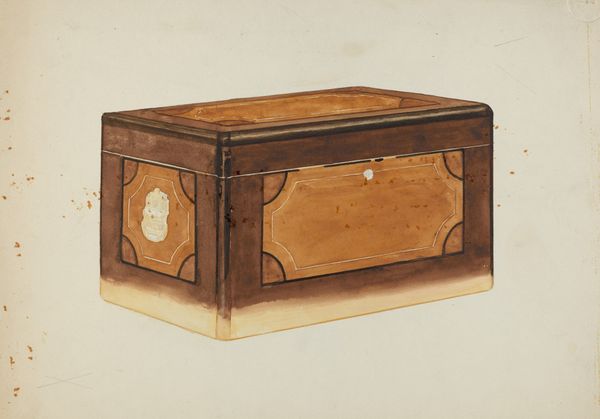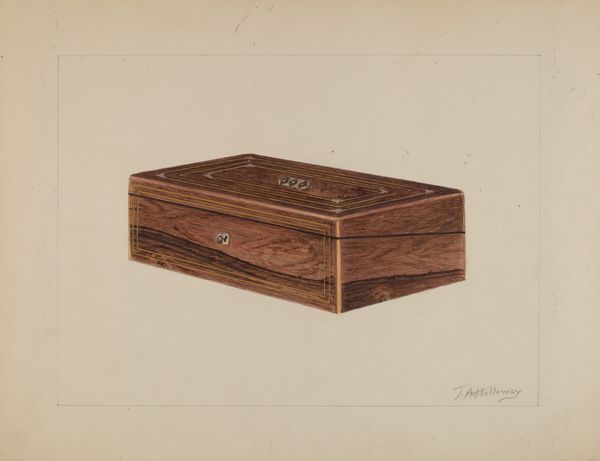
drawing, watercolor
#
drawing
#
water colours
#
watercolor
#
watercolour illustration
#
genre-painting
#
watercolor
Dimensions: overall: 23 x 30.5 cm (9 1/16 x 12 in.) Original IAD Object: 12 3/4" high; top: 8 1/2" wide; top of the drawer: 2 1/4" high; 5 1/4" wide
Copyright: National Gallery of Art: CC0 1.0
Editor: This is Edward L. Loper's "Cabinet Spice Box," a watercolor from around 1938. It feels very functional, a sort of design study. It seems to elevate this common object... but to what end? How do you interpret its social and cultural context? Curator: It’s interesting to consider this not just as an object, but as a representation within a particular historical moment. The 1930s saw a rise in interest in American folk art and design. The index of American Design, for example, employed artists to document handcrafted objects. Does this watercolor function similarly, as a record, even a celebration, of vernacular craft? Editor: So, you are saying that the artist may be attempting to archive a historical record through their art. I can see that given the level of details in the rendering, but wouldn't a photo achieve that same objective? Curator: Photography served a documentary purpose, certainly, but watercolor rendering imbues the object with something more, doesn't it? The choice of medium—hand-drawn, delicately colored—speaks to a valuing of craftsmanship, a pushback, perhaps, against industrialization. Look at the placement against the plain background and outline in the upper left, can you tell how those choices highlight both utility and handmade aesthetic? Editor: That makes sense! I didn’t consider the impact of industrialization on art during this period. The hand-rendered quality truly brings forward its unique attributes. Curator: Exactly! Perhaps it suggests a yearning for simpler times, even as those times were rapidly changing. Understanding those competing impulses helps us understand not just the object depicted, but also the cultural values being projected onto it. Editor: I definitely have a clearer understanding of this art through historical context now. Thank you! Curator: My pleasure. Examining artwork in this way not only provides a lens to past realities, it enriches our engagement with artistic creation in the present as well.
Comments
No comments
Be the first to comment and join the conversation on the ultimate creative platform.
